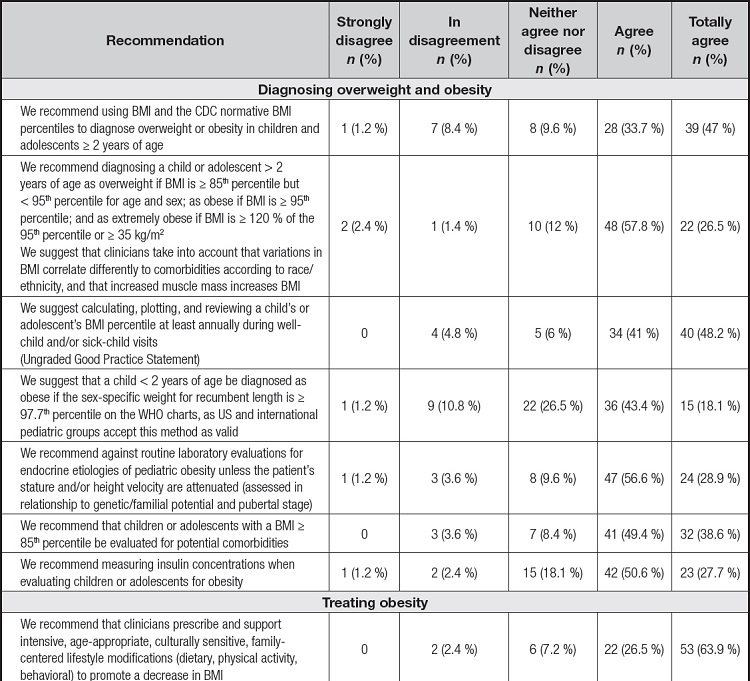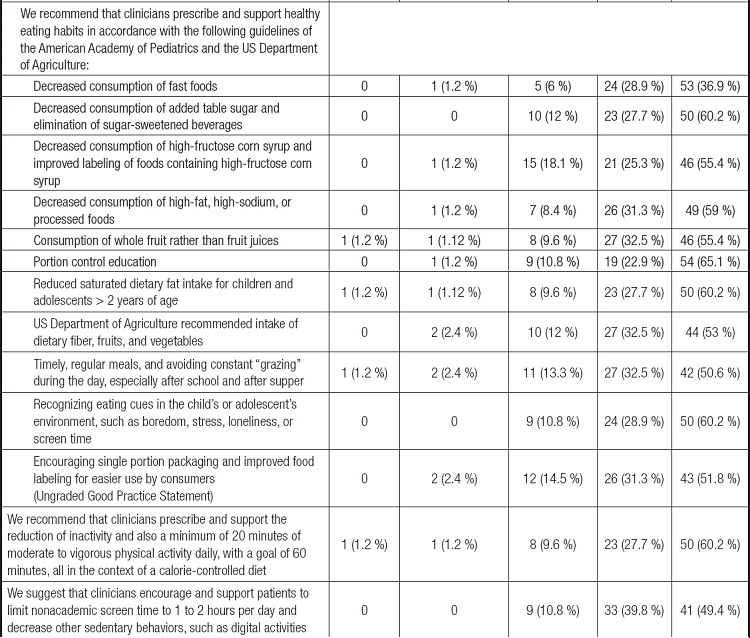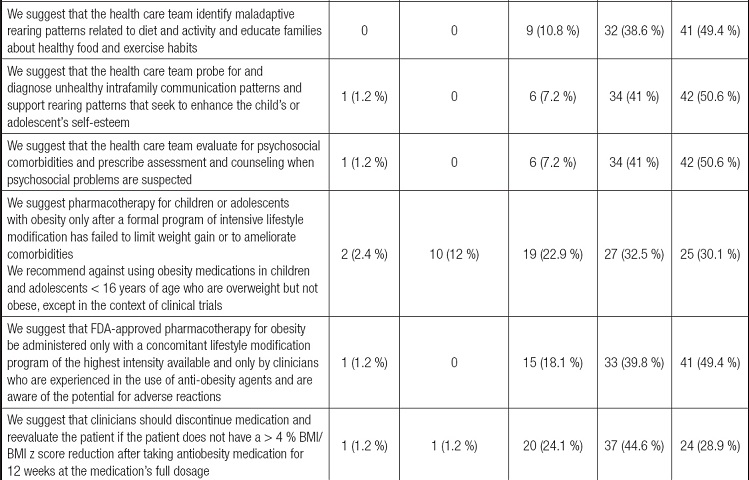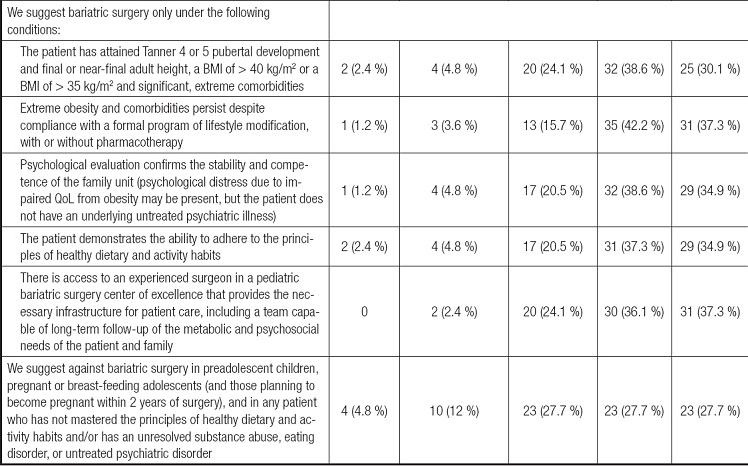Dear Editor:
Childhood obesity is a serious public health problem in Mexico (1), and it represents an important factor in the development of multiple cardiovascular diseases and complications, such as diabetes mellitus and non-alcoholic fatty liver disease, among others (2). Currently, there are recommendations for the prevention, early identification, and treatment of this condition. Among them, there are the Clinical Practice Guideline for the Evaluation and Treatment of Children and Adolescents with Obesity (3), presented this year by the American Academy of Pediatrics; the Clinical Practice Guideline of Pediatric Obesity-Assessment, Treatment and Prevention by the Endocrine Society (4), published in 2017; and a Mexican Consensus developed in 2015 by an independent group of experts on prevention, diagnosis, and treatment of obesity in children (5). All these documents are open access, and the last one is in Spanish.
The objective of this study was to evaluate the knowledge of medical students about the diagnosis and treatment of childhood obesity.
This analysis was a cross-sectional study conducted from April to May 2023. Undergraduate medical interns from five schools in Puebla, Mexico, were invited via e-mail to participate in an anonymous survey on the diagnosis and treatment of pediatric overweight and obesity according to the recommendations of the Endocrine Society Clinical Practice Guideline (4). A five-point Likert scale was used to evaluate the recommendations.
We asked if they had received training on childhood obesity during their medical school studies, and 93 % (n = 77) reported that they had, while 7 % (n = 6) mentioned not having taken classes about obesity in children. We also asked if the students knew the endocrine practice guidelines of the American Academy of Pediatrics or those published by the Boletín Médico del Hospital Infantil de México, and it turned out that 64 % (n = 53) did not know any guide. Of the participants, 80 % confirmed that they use body mass index (BMI) and the Centers for Disease Control and Prevention (CDC) normative BMI percentiles to diagnose overweight and obesity in children and adolescents > 2 years of age. The rest of the points on diagnosis and treatment are presented in table I.
Table I. Likert scale of recommendations of the Endocrine Society Clinical Practice Guideline for the Assessment, Treatment and Prevention of Pediatric Obesity.

Table I (cont). Likert scale of recommendations of the Endocrine Society Clinical Practice Guideline for the Assessment, Treatment and Prevention of Pediatric Obesity.

Table I (cont). Likert scale of recommendations of the Endocrine Society Clinical Practice Guideline for the Assessment, Treatment and Prevention of Pediatric Obesity.

Table I (cont). Likert scale of recommendations of the Endocrine Society Clinical Practice Guideline for the Assessment, Treatment and Prevention of Pediatric Obesity.

BMI: body mass index; CDC: Centers for Disease Control and Prevention; WHO: World Health Organization; FDA: Food and Drug Administration; QoL: quality of life.
In conclusion, in this study we observed that during medical training, the students received information on childhood obesity, and most of them knew the current recommendations for the diagnosis and treatment of obesity in the pediatric age. Greater dissemination of the current guidelines for addressing childhood obesity is required. Furthermore, it is relevant to evaluate if an adequate diagnosis of obesity in children is made by young doctors in clinical practice and if the corresponding recommendations for treatment are adequately carried out.














